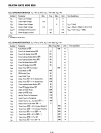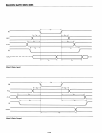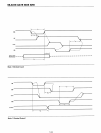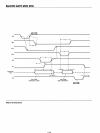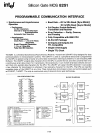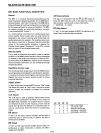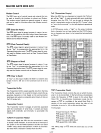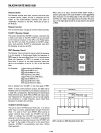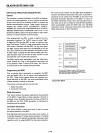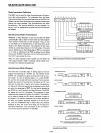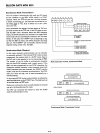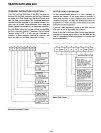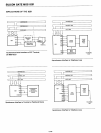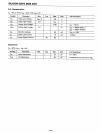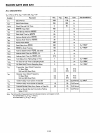
For
Example:
SILICON GATE MOS
8251
Receiver Buffer
The
Receiver accepts serial
data,
converts
this
serial
input
to
parallel
format,
checks
for
bits
or
characters
that
are
unique
to
the
communication
technique
and
sends an
"assembled"
character
to
the
CPU. Serial
data
is
input
to
the
RxD pin.
Receiver Control
This functional block manages all receiver-related activities.
RxRDY
(Receiver Ready)
This
output
indicates
that
the
8251
contains
a
character
that
is
ready
to
be
input
to
the
CPU.
RxRDY
can
be
connected
to
the
interrupt
structure
of
the
CPU
or
for
Polled opera-
tion
the
CPU can check
the
condition
of
RxRDY
using a
status read
operation.
RxRDY
is
automatically
reset when
the
character
is
read
by
the
CPU.
RxC (Receiver Clock)
The
Receiver Clock
controls
the
rate
at
which
the
character
is
to
be received.
In
Synchronous
Mode,
the
frequency
of
RxCisequal
to
the
actual Baud Rate (1x).
In
Asynchronous
Mode,
the
frequency
of
RxC
is
a multiple
of
the
actual
Baud Rate. A
portion
of
the
mode
instruction
selects
the
value
of
the
multiplier; it can
be
1x, 16x
or
64x
the
Baud
Rate.
If Baud Rate equals 300 Baud,
RxC equals 300 Hz
(1
x)
RxC equals
4800
Hz
(16x)
RxC equals 19.2 kHz (64x).
If Baud Rate equals 2400 Baud,
RxC equals
2400
Hz
(1
x)
RxC equals 38.4 kHz (16x)
RxC equals 153.6 kHz (64x).
Data
is
sampled
into
the
8251
on
the
rising edge
of
RxC.
NOTE: In
most
communications
systems,
the
8251
will be
handling
both
the
transmission and reception
operations
of
a single link. Consequently,
the
Receive
and
Transmit
Baud
Rates will be
the
same.
Both
TxC
and RxC will require iden-
tical frequencies
for
this
operation
and can
be
tied
together
and
connected
to
a single frequency source (Baud Rate
Generator)
to
simplify
the
interface.
SYNDET
(SYNC Detect)
This pin
is
used in
SYNChronous
Mode only. It
is
used as
either
input
or
output,
programmable
through
the
Control
Word. It
is
reset
to
"low"
upon
RESET. When used as an
output
(internal
Sync
mode),
the
SYNDET pin will go
"high"
to
indicate
that
the
8251
has located
the
SYNC
character
in
the
Receive
mode.
If
the
8251
is
programmed
to
use
double
Sync
characters (bi-sync),
then
SYNDET will
go
"high"
in
the
middle
of
the
last
bit
of
the
second
Sync
character.
SYNDET
is
automatically
reset
upon
a
Status
Read
operation.
When used as
an
input,
(external SYNC
detect
mode),
a
positive going signal will cause
the
8251
to
start
assembling
data
characters
on
the
falling edge
of
the
next
RxC.
Once
in SYNC,
the
"high"
input
signal
can
be
removed.
The
dura-
tion
of
the
high signal
should
be
at
least equal
to
the
period
of
RxC.
\
ADDRESS BUS
\
A
o
\
CONTROL BUS
\
I/O
R
I/OW
RESET
t/>2
(TTL)
\
DATA
BUS
\
n
(
~7
t'\
(
C/O
cs 0
7
-0
0
RD
WR
RESET
ClK
8251
8251 Interface
to
8080
Standard System Bus
5-138



